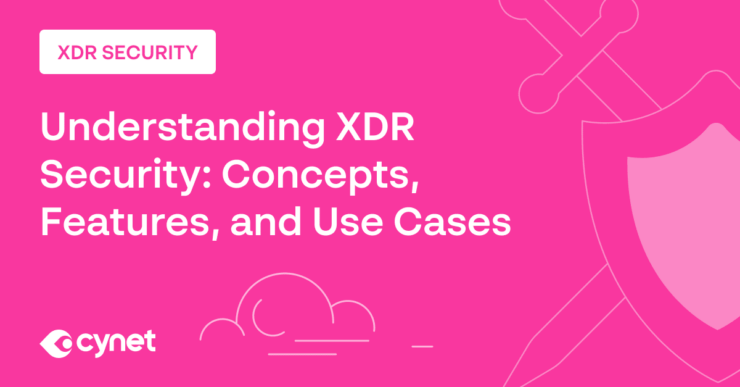EDR vs. XDR: Similarities and Differences
The Core Capabilities of EDR and XDR
Here are some key capabilities of EDR solutions:
- Collecting endpoint data: They collect data from the endpoints on the network, such as process information, file activity, network traffic, and system logs. This data is used to create a baseline of “normal” activity on the endpoint, which can be compared to current activity to identify anomalies that may indicate a security threat.
- Analyzing data: They use advanced analytics and machine learning algorithms to analyze the data collected from endpoints, looking for patterns and indicators of compromise. This analysis can help to identify threats that may be missed by traditional signature-based antivirus solutions.
- Automatically containing endpoint threats: They can take automatic action to contain threats that are detected on an endpoint, such as isolating the endpoint from the network, terminating malicious processes, or rolling back changes made by malware.
- Providing support for endpoint response efforts: They provide security teams with the tools and information they need to investigate and respond to security incidents. This includes providing detailed information about the threat, such as its origin, behavior, and impact on the endpoint, as well as tools for remediation and recovery.
XDR solutions go beyond endpoint protection and cover a wide range of threat detection and response capabilities across multiple environments, including endpoints, networks, cloud, and email. Here are some additional capabilities provided by XDR:
- Collecting data from a wider range of sources: An XDR solution can collect data from a wider range of sources than EDR, including network traffic, cloud applications, and email. This enables a more comprehensive view of an organization’s security posture, allowing for more effective threat detection and response.
- Providing more comprehensive analytics to detect active threats: XDR solutions use advanced analytics and machine learning algorithms to analyze data from multiple sources and detect active threats that may be missed by traditional security solutions. By correlating data from different sources, XDR can identify complex threats that span multiple environments and attack vectors.
- Effectively replacing part of an organization’s cybersecurity expenses: Adopting XDR can provide a more cost-effective approach to cybersecurity by consolidating multiple security solutions into a single platform. By providing a more comprehensive view of an organization’s security posture, XDR can reduce the need for multiple point solutions and streamline security operations.
Similarities Between EDR and XDR
Both types of solutions share a similar purpose and approach to protecting organizations from endpoint threats. Both are designed to provide real-time threat detection and response capabilities. The main similarities include:
- Preventative security approach: EDR and XDR take a preventative approach to cybersecurity by using advanced analytics and machine learning algorithms to detect threats in real time, allowing security teams to respond quickly before damage can be done.
- Fast response: Both solutions provide fast response times to threats. By using automated response and containment capabilities, they can take immediate action to isolate and remediate threats on the network.
- Support for threat hunting: They support threat hunting by enabling security teams to conduct investigations and analyze threat data in more detail. This helps to identify threats that may have been missed by automated detection, and can also help to inform the development of more effective security policies and procedures.
Differences Between EDR and XDR
Despite having similar objectives, EDR and XDR solutions differ in these important ways:
- Scope: EDR focuses on endpoint protection, providing visibility and prevention for individual endpoints on a network. In contrast, XDR takes an integrated security approach, combining visibility and threat management across multiple environments, including endpoints, networks, cloud, and email.
- Integration: EDR uses a best-in-breed approach to endpoint security, leveraging multiple security solutions to provide the most effective protection. However, it does not address other aspects of cybersecurity, so it is often necessary to integrate EDR manually with other solutions. On the other hand, XDR provides a unified solution that covers a wider range of security threats and attack surfaces.
Is XDR Better Than EDR?
Deciding whether to implement an EDR or XDR solution depends on an organization’s specific security needs and resources. However, there are some factors that may make XDR a better solution than EDR for some organizations.
One of the main advantages of XDR over EDR is its comprehensive approach to cybersecurity. XDR integrates data from multiple sources to provide a more holistic view of an organization’s security posture. This allows for better response to endpoints and other threats that may span multiple environments or attack vectors. In contrast, EDR only provides protection for individual endpoints across the network and may not detect threats that originate from other sources.
Another advantage of XDR is its ability to reduce the complexity of security operations. By providing a unified solution for threat detection and response across multiple environments, XDR can streamline security operations and reduce the need for multiple-point solutions. This can help to reduce the cost and resource requirements of cybersecurity operations.
When evaluating an endpoint solution, organizations should consider their specific security needs and resources. Factors to consider may include:
- Size and complexity of the organization’s network
- Type and volume of sensitive data that needs to be protected
- Level of risk associated with the organization’s industry or geographic location
- Budget and resources available for cybersecurity operations
Beyond XDR Security With Cynet’s Autonomous Breach Protection
Cynet 360 AutoXDR is an autonomous breach protection platform that works on three levels, providing XDR, SOAR capabilities, and 24/7 MDR in one unified solution. Cynet natively integrates these three services into an end-to-end platform that fully automates many protection and response tasks.
Cynet’s XDR layer includes the following capabilities:
- Endpoint protection—multilayered protection against malware, ransomware, exploits, and fileless attacks.
- Network protection—protecting against scanning attacks, MITM, lateral movement, and data exfiltration.
- User protection—preset behavior rules coupled with dynamic behavior profiling to detect malicious anomalies.
- Deception—a wide array of network, user, and file decoys to lure advanced attackers into revealing their hidden presence.
Cynet AutoXDR can be deployed across thousands of endpoints in less than two hours. It can be immediately used to uncover advanced threats and then perform automatic or manual remediation, disrupt malicious activity and minimize damage caused by attacks.
Get a free trial of Cynet 360 AutoXDR and experience the world’s only integrated XDR, SOAR, and MDR solution.



